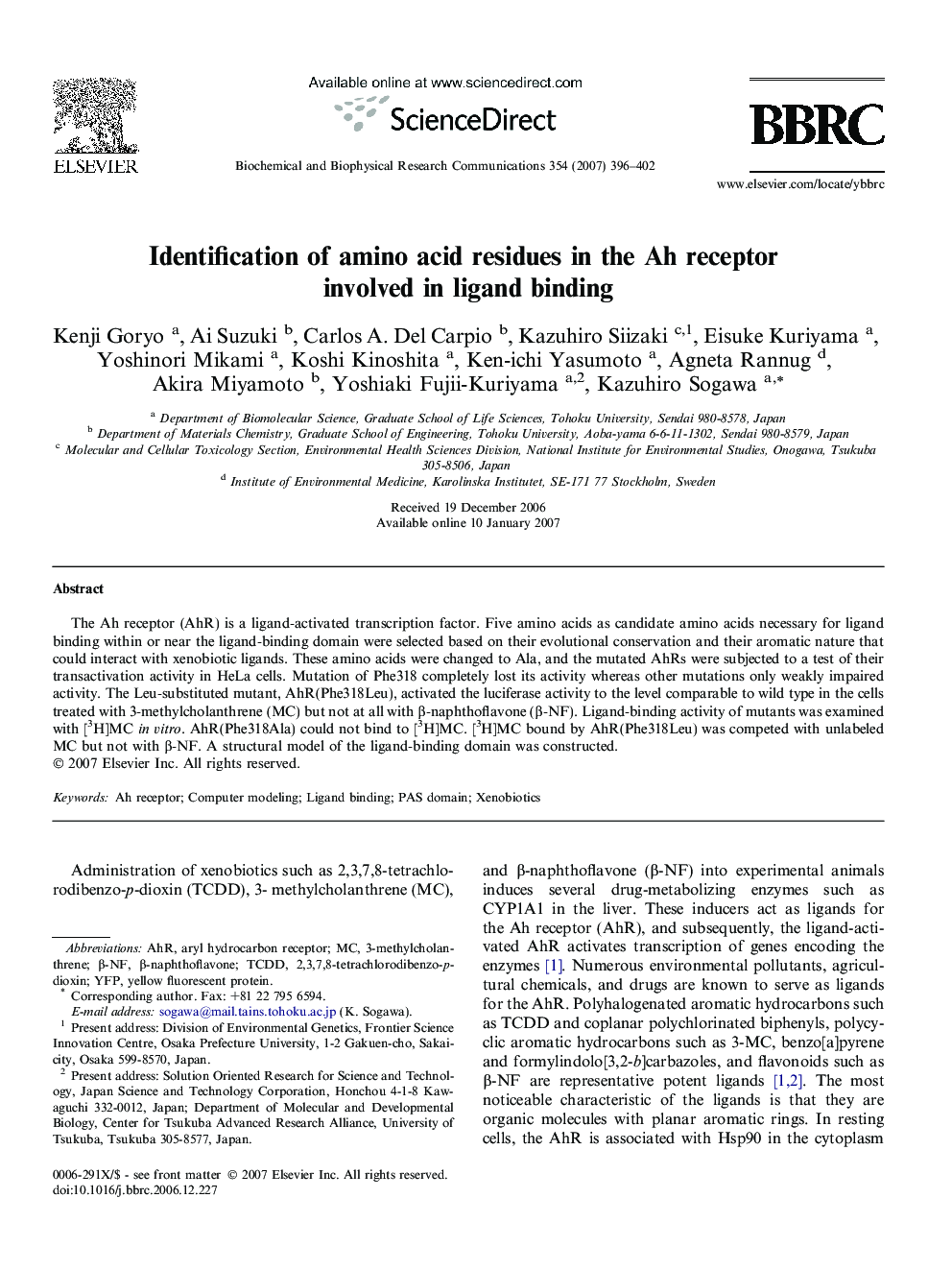| Article ID | Journal | Published Year | Pages | File Type |
|---|---|---|---|---|
| 10767423 | Biochemical and Biophysical Research Communications | 2007 | 7 Pages |
Abstract
The Ah receptor (AhR) is a ligand-activated transcription factor. Five amino acids as candidate amino acids necessary for ligand binding within or near the ligand-binding domain were selected based on their evolutional conservation and their aromatic nature that could interact with xenobiotic ligands. These amino acids were changed to Ala, and the mutated AhRs were subjected to a test of their transactivation activity in HeLa cells. Mutation of Phe318 completely lost its activity whereas other mutations only weakly impaired activity. The Leu-substituted mutant, AhR(Phe318Leu), activated the luciferase activity to the level comparable to wild type in the cells treated with 3-methylcholanthrene (MC) but not at all with β-naphthoflavone (β-NF). Ligand-binding activity of mutants was examined with [3H]MC in vitro. AhR(Phe318Ala) could not bind to [3H]MC. [3H]MC bound by AhR(Phe318Leu) was competed with unlabeled MC but not with β-NF. A structural model of the ligand-binding domain was constructed.
Keywords
Related Topics
Life Sciences
Biochemistry, Genetics and Molecular Biology
Biochemistry
Authors
Kenji Goryo, Ai Suzuki, Carlos A. Del Carpio, Kazuhiro Siizaki, Eisuke Kuriyama, Yoshinori Mikami, Koshi Kinoshita, Ken-ichi Yasumoto, Agneta Rannug, Akira Miyamoto, Yoshiaki Fujii-Kuriyama, Kazuhiro Sogawa,
